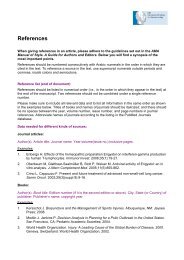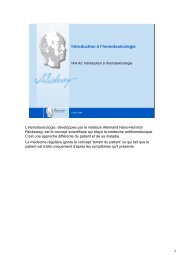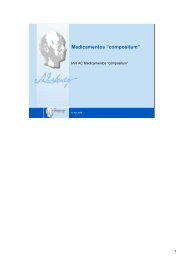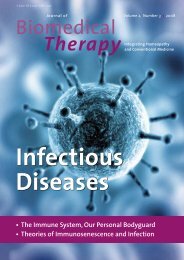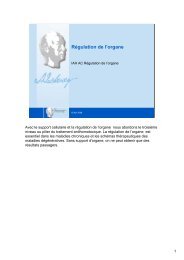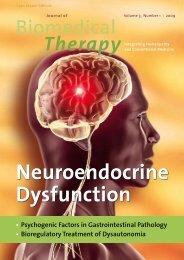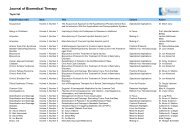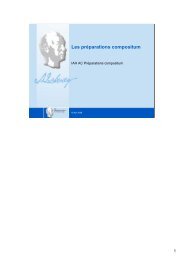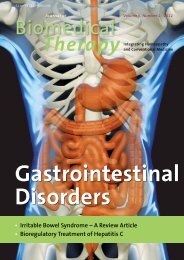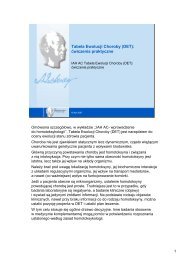IAH AC Gastrointestinal Disease
IAH AC Gastrointestinal Disease
IAH AC Gastrointestinal Disease
You also want an ePaper? Increase the reach of your titles
YUMPU automatically turns print PDFs into web optimized ePapers that Google loves.
Vicious cycles of changed permeability<br />
• Immune activation or suppression<br />
• Food intolerance<br />
• Hepatic overload<br />
• Bacterial dysbiosis<br />
• Low grade pancreatitis (partially digested foods)<br />
© <strong>IAH</strong> 2007<br />
15<br />
Increased permeability will led to a couple of vicious cycles:<br />
The first is an increase in food intolerance and also changes in the immunity.<br />
The immunity goes down when the symbiotic bacteria are not stimulating the<br />
immune system enough, whereas if the food and toxic particles get into the gut<br />
lining in too high quantities,it will set off an inflammatory process. (see the next<br />
slides)<br />
The liver, being the last barrier, will bear the brunt of chemicals and<br />
environmental toxins leaking through the gut lining, and all patients with a leaky<br />
gut should be considered to have liver overload.<br />
The symbiotic bacteria and the gut lining have a very special relationship.<br />
The gut lining, if healthy, will maintain a milieu for the bacteria, and conversely,<br />
the bacteria will in their metabolism secrete substances such as propionic acid,<br />
which will act as a fuel source for the gut cells. New evidence even suggest this<br />
symbiotic relationship to exist to the point where there is cell to cell<br />
communication between the bacteria and the gut lining. If the permeability is<br />
disturbed this is lost, and dysbiosis will ensue.<br />
Lastly we see a low grade malapsorbtion, as the exocrine pancreas is affected.<br />
15



